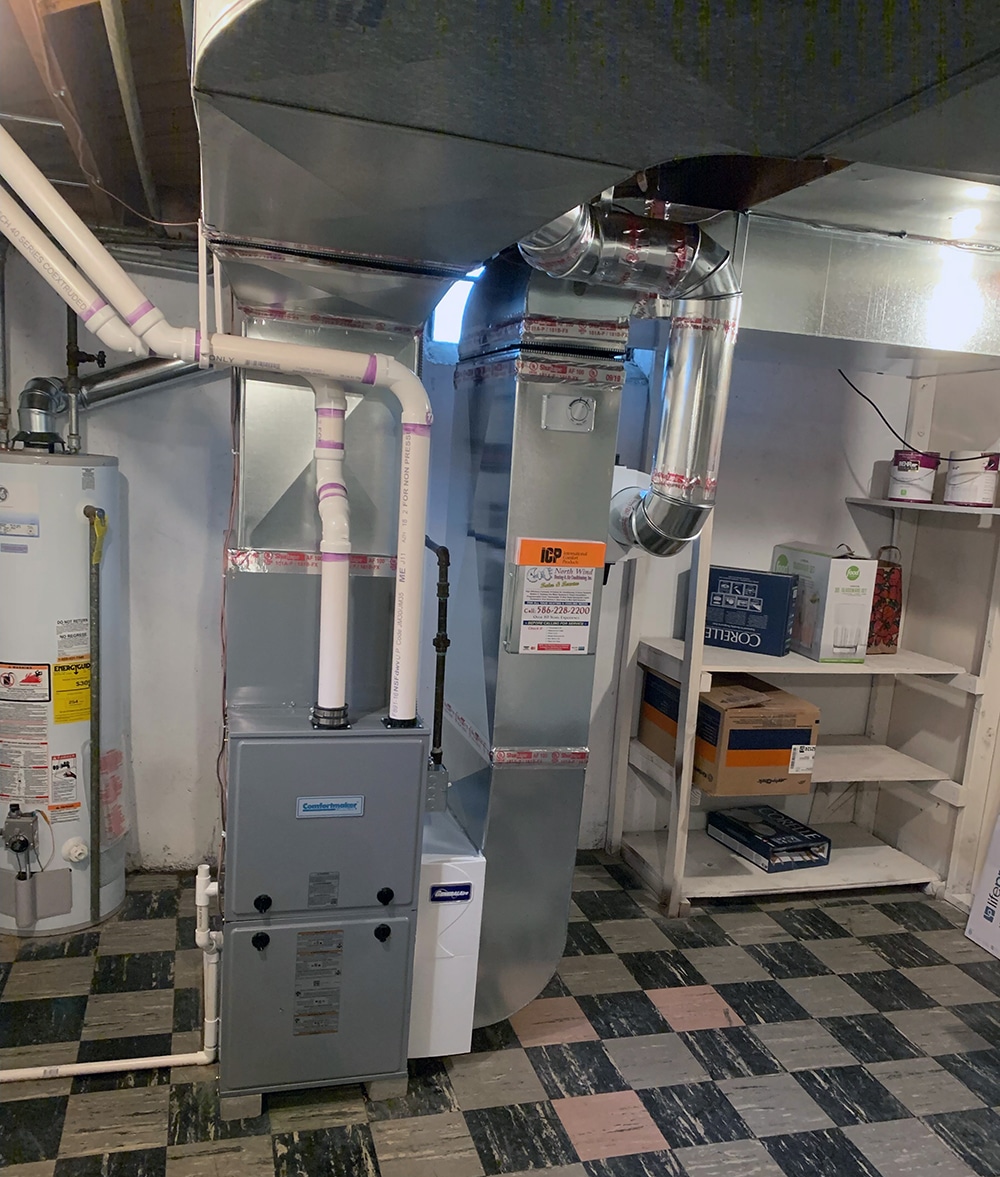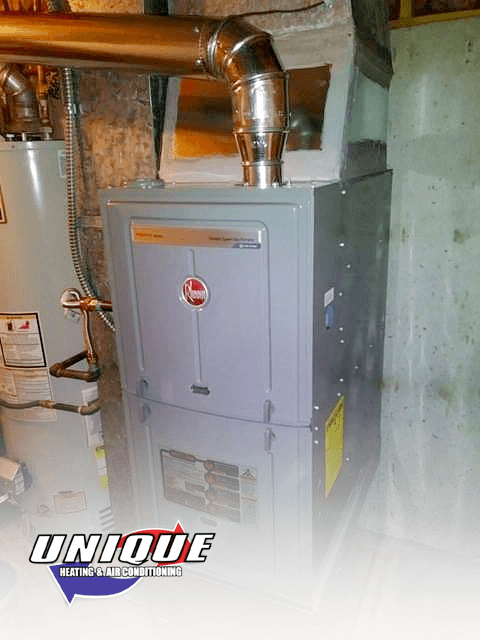Find the leading heating company for furnace installation and expert repairs
Find the leading heating company for furnace installation and expert repairs
Blog Article
The Ultimate Overview to Heating System Installation for a Cozy Home
Heater setup is a vital aspect of keeping a comfortable home setting, especially during the cooler months. Comprehending the various kinds of furnaces readily available and the value of choosing the ideal size can greatly influence both efficiency and convenience levels. In addition, a complete setup procedure, matched by the right devices and materials, makes certain optimal efficiency. This guide intends to equip house owners with the understanding required to make educated choices and execute efficient upkeep practices. As you take into consideration these factors, the concern continues to be: what steps can you take to guarantee your heater serves you well for many years ahead?
Kinds of Heaters
When considering furnace installation, comprehending the different kinds of heating systems readily available is crucial for making an informed choice. The key types of furnaces include gas, electric, and oil furnaces, each offering distinct advantages and considerations.
Gas furnaces are the most common selection as a result of their performance and reduced functional prices. They make use of gas or lp, supplying quick heating and consistent performance, making them ideal for colder environments.
Electric heaters, while usually less complicated to mount and preserve, have a tendency to have higher functional prices. They are commonly preferred in areas where gas service is inaccessible or for homes with existing electrical facilities.
Oil furnaces, though much less usual today, stay a practical option in particular areas. They shed heating oil, which can be useful during colder months, yet their dependence on oil delivery poses possible difficulties.
Additionally, there are high-efficiency versions offered across these kinds, which can considerably lower power consumption and energy expenses. Ultimately, recognizing these furnace kinds will aid house owners choose a system that straightens with their heating requires, budget, and power preferences.
Picking the Right Size
Picking the appropriate size for a furnace is vital to making certain optimum performance and energy effectiveness. A small heater will certainly battle to keep comfy temperature levels throughout the cool months, leading to increased wear and tear, higher energy bills, and possible system failing. On the other hand, a large furnace might cycle on and off as well frequently, causing inefficient home heating and irregular temperature level distribution within the home.

Furnace dimensions are generally gauged in British Thermal Units (BTUs), which suggest the quantity of energy needed to warm an area. It is suggested to seek advice from a certified HVAC expert that can perform the required estimations and recommend a properly sized device. furnace repair. Purchasing the best heating system dimension not only enhances comfort yet additionally adds to long-lasting power financial savings and system reliability
Installation Process Introduction
As soon as the appropriate heating system size has actually been established, the following step involves comprehending the setup procedure. This procedure commonly begins with a complete analysis of the installment website, consisting of the existing ductwork and ventilation systems. Proper planning is important to make sure seamless combination and ideal efficiency of the new heating system.
The setup normally includes detaching the old system, which includes safely removing any electrical links, gas lines, and ductwork connected to the previous heater - furnace repair. As soon as gotten rid of, the brand-new heating system is thoroughly positioned and leveled, guaranteeing that it satisfies the producer's specifications for optimum procedure
Following, the installer will connect the necessary gas and electric lines, sticking to regional codes and safety regulations. Following this, ductwork might require to be modified or replaced to suit the new system, guaranteeing efficient air movement throughout the home.

Necessary Tools and Products
Gathering the crucial tools and products is crucial for a successful heater installation. Correct preparation guarantees that the installment process is effective and decreases the potential for errors.
Trick tools required consist of a drill, screwdrivers, wrenches, pliers, and a degree. A multimeter is important for electrical links, while a pipeline cutter and adjustable wrench are required for gas line setup. In addition, a measuring tape and a stud finder will certainly aid in ensuring accurate placement and safe attachment of the furnace.
In terms of materials, you will need ductwork, insulation, and securing tape to make certain optimum airflow and energy efficiency. It is likewise crucial to have visit this site right here a brand-new heater filter accessible, along with venting products, such as PVC pipeline or steel flue, relying on the kind of heater being mounted.
Safety and security equipment, including handwear covers, safety glasses, and a face mask, is additionally critical to safeguard against dust and debris during installment. Having all these devices and products conveniently offered not just enhances the procedure however likewise enhances the safety and effectiveness of the furnace installment.
Upkeep Tips for Long Life
To make sure the durability of your heating system, it is necessary to execute a regular maintenance timetable that resolves crucial elements of the system. Start by replacing or cleansing the air filter each to three months, as a clogged filter can limit air flow and decrease efficiency. In addition, check and clean up the blower setting up to avoid dust accumulation that can prevent efficiency.
Next, examine the thermostat setups and recalibrate if essential to make sure precise temperature level guideline. Examine the ductwork for leakages or obstructions, as this can lead to power loss and unequal home heating. On a regular basis lube the electric motor and bearings according to the producer's recommendations to lessen wear and tear.
Specialist assessments should happen annually, where a certified specialist can analyze the heating system's total condition, look for gas leaks, and make sure that safety functions are operating properly. Consider setting up a programmable thermostat to maximize energy usage and preserve regular home temperatures. By embracing these upkeep practices, you can improve your heater's performance, extend its my explanation life expectancy, and find this inevitably enjoy a cozy and comfortable home setting.
Conclusion
Effective furnace installment is critical for attaining optimum home comfort and energy efficiency. Recognizing numerous heating system types and choosing the ideal dimension guarantees proper functionality.
Report this page